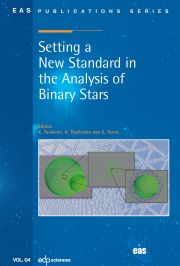Article contents
Development of KIDs detectors for large submillimetric telescopes
Published online by Cambridge University Press: 24 December 2009
Abstract
Large millimetric and submillimetric telescopes can play a crucialrole in our understanding of the Universe, allowing the directmeasurement of early galaxies or the investigation of the earlieststages of star formation. The B modes of CMB polarization are adirect probe of the Inflationary epoch and their measurementpromises to provide information on the scale of energies at whichthe process took place. For these investigations (and manyothers), large detectors arrays with thousands of pixels areneeded, to achieve high mapping speeds. This is especially true inthe case of mm and sub/mm observations from extremely cold and drylocations like Dome-C, where ultra-low temperature detectors,reaching photon noise limited performance, are needed to fullyexploit the excellent quality of the site. In this paper wepresent the working principle of the Microwave Kinetic InductanceDetectors and their status of development in Italy, focusing onthe key aspects that make them ideal for large arrays of sensors.
Information
- Type
- Research Article
- Information
- Copyright
- © EAS, EDP Sciences, 2010
References
- 1
- Cited by

